Eva was watching news on TV in the evening. The reporter showed videos of strong winds bending trees, heavy rain pouring on the streets, and lightning lighting up the dark clouds, followed by loud thunder. Eva wondered what this natural event was called.
What natural event did Eva see on the news?
Eva saw high-speed winds turning into a storm with heavy rain. When lightning and thunder occur, it becomes a thunderstorm.
Let us understand high-speed winds with the help of an activity.
Activity:
To observe how high-speed winds are accompanied by a reduced pressure.
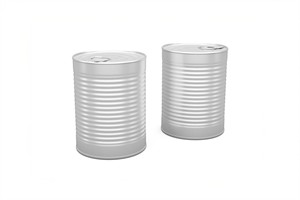
Tin cans
Step 1: Place the two empty tin cans side by side on the table, leaving a small gap of about 2cm between them.
Step 2: Blow air steadily into the gap between the two tin cans.
Step 3: Watch what happens.
Observation:
It is observed that instead of moving apart, the two cans roll towards each other.
It is observed that instead of moving apart, the two cans roll towards each other.
Conclusion:
Blowing air between the tin cans creates a low pressure area between them because it makes the air move faster in that region, lowering the pressure. The air on the outer sides is at higher pressure, so it pushes the cans towards each other. This shows that moving air creates low pressure.
Blowing air between the tin cans creates a low pressure area between them because it makes the air move faster in that region, lowering the pressure. The air on the outer sides is at higher pressure, so it pushes the cans towards each other. This shows that moving air creates low pressure.
High-speed wind:
High-speed wind is the fast movement of air from a high pressure area to a low pressure area. As the wind speed increases, the pressure it exerts decreases. This pressure difference makes air move faster. The speed of air (wind) is higher if the pressure difference is higher.
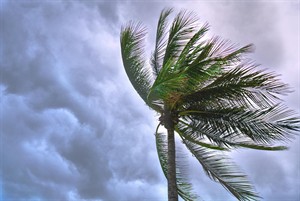
High speed wind blowing over a tree
Effect of high-speed winds on roofs:
- When strong winds blow over houses, they create low pressure above the roof.
- The air pressure inside the house is higher than outside.
- If the difference is very large and the roof is weak, the roof can be blown away.
Why doors and windows should be kept open?
- If doors and windows are open, wind can pass through the house instead of only above it.
- This reduces the pressure difference between inside and outside.
- As a result, the chance of the roof blowing away is much less.
High-speed winds during storms are often accompanied by thunder and lightning. These natural events occur together and make storms more dangerous.
Wind circulation and storms:
- When land gets heated, the warm and moist air rises because it is lighter.This creates a low pressure area.
- Cooler air from nearby high pressure areas rushes in to fill the space and this air becomes heated and rises.
- This cycle continues, causing wind circulation.
- As rising air expands, it cools, and moisture condenses into water droplets, forming clouds.
- Water droplets join to form bigger drops, which fall as rain, hail, or snow.
- Strong winds with rain are called a storm.
- In hot and humid regions like India, storms happen more often.
How charges form in clouds?
- Sometimes, warm air rises very high where it is colder.
- Water droplets freeze into ice particles.
- Strong upward and downward winds make droplets and ice rub and collide together.
- Rubbing causes static charges to build up like rubbing objects.
- Light ice particles become positively charged and move up.
- Heavier water droplets become negatively charged and stay lower.
- This separates charges inside the cloud.
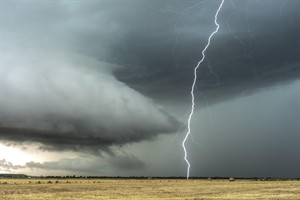
Clouds bringing rain
Lightning formation:
- When the bottom of the cloud which has negative charges comes close to the ground, it makes the ground and objects positively charged.
- Normally, air stops charges from meeting by acting as an insulator.
- But when the charge difference becomes very high, the air breaks down.
Lightning:
Lightning is a bright flash in the sky caused when opposite electric charges quickly come together and meet, releasing energy. Lightning may occur within a cloud, between clouds, or between cloud and ground.
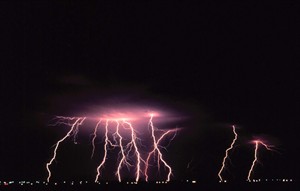
Lightning
Thunder:
Lightning heats the air around it very quickly. The air expands suddenly, creating a loud sound called thunder. A storm with lightning and thunder is called a thunderstorm.
Dangers of lightning:
- Lightning can cause fires, damage buildings, and harm people and animals.
- It can result in severe burns or even death.
Safety during lightning:
- Stay away from tall objects like trees.
- Do not go near electric poles or touch electrical wires or equipment during lightning.
- If you are in a low, open area, crouch down but do not lie flat.
- Avoid umbrellas with metal rods.
- If in water, get out immediately.
- If inside a bus, car or any building, you are safer.
Lightning conductor:
A lightning conductor is a metal rod fixed to a building while it is being constructed. The rod has a pointed end that is kept higher than the top of the building, and its other end is buried deep in the ground. When lightning strikes, the rod gives the electric charges a safe and easy path to travel into the ground, protecting the building from damage.
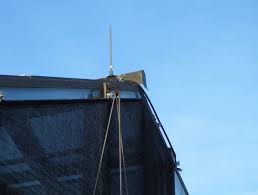
Lightning arrester
Important!
- We see lightning first and hear thunder later because light travels much faster than sound.
- Light from the lightning reaches our eyes almost instantly.
- But sound of thunder takes more time to travel through air, so we hear it after the flash.